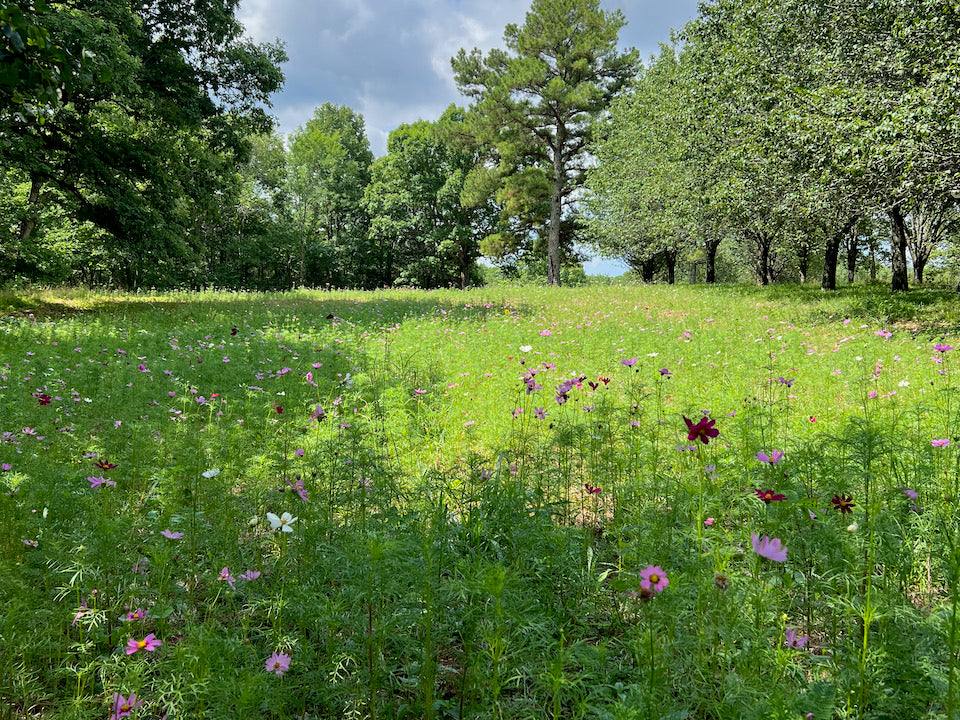
"Those" Neighbors...
When we decided to stop mowing and haying our pastures, people thought we were a little crazy, but we knew it was the best solution for our goats and for the natural wildlife around us. When we stopped mowing the majority of our lawn, people thought we were crazy AND lazy... But look how beautiful it is now!
Ten years ago, when we first moved to the farm, our house was surrounded by multiple acres of manicured lawn. We knew immediately that the majority of it would be “re-wilded” and soon began letting the natural flora grow. I remember a new friend staring in shock and curiosity at the wild meadow that we let grow where the lawn once stood. She panned across the landscape several times
before musing that she had heard that there were people who preferred a "natural look" Yes, that would be us.
We do still mow some of our lawn directly around the house for playing and enjoying, but the majority of it is now a giant wildflower meadow for pollinators, wildlife, and the rest of us with eyes to enjoy. This year we partnered with our local National Resources and Conservation Service to seed even more native wildflowers in the meadow and create an enhanced environment for the pollinators.
But Why?
“Meadows establish wildlife and pollinator habitats, are low-maintenance and low-cost, have a built-in resilience that helps them weather climate extremes, and can draw down and store far more carbon dioxide than any manicured lawn.” - Owen Wormser
Other than being absolutely beautiful, here are some great reasons why you might consider dedicating part of your lawn to growing a meadow:
Meadows Are Good For The Earth (And All Of It's Creatures) - It's In addition to benefiting wildlife, native grasses also improve the soil. Most native grass species are perennial (which was the mix we used), which means that they create deeper root systems. Deep roots reach nutrients, water and minerals that not only stabilize the plant in extreme conditions, but can also bring those nutrients up to the surface. Deep roots reduce erosion, contribute to soil fertility and also make it more difficult for invasive species to take hold.
It's Easier AND Less Expensive - Maintaining a meadow is also far easier and more eco-friendly than maintaining a lawn. Instead of mowing on a weekly or bi-weekly basis, you can instead focus on trimming and manicuring lightly through the growing season and only mowing once or twice per year during the winter once the plants have gone dormant. You’ll want to mow and trim at a higher clip so the plants bounce back strong in the Spring.

Want to learn more?
This book by Owen Wormser “describes how to plant an organic meadow garden or traditional meadow, that’s right for your site. His book includes guidance on:
- Preparing your plot
- Designing your meadow
- Planting without using synthetic chemicals
- Growing 21 starter native grasses and wildflowers, including butterfly weed, smooth blue aster, purple
- coneflower, wild bergamot, and many more.
- He also includes tips on building support in neighborhoods where a tidy lawn is the standard, and how to become a meadow activist.”
This is not an ad, we don’t receive any proceeds if you buy is book, we just want you try out a mini-meadow if you have the space!

